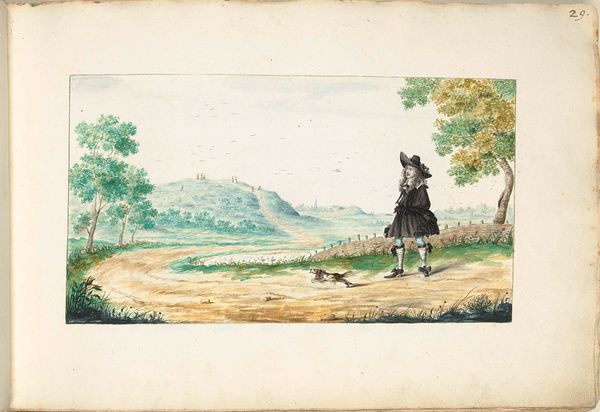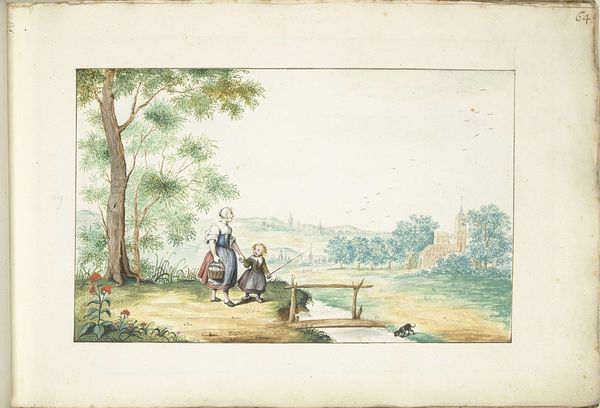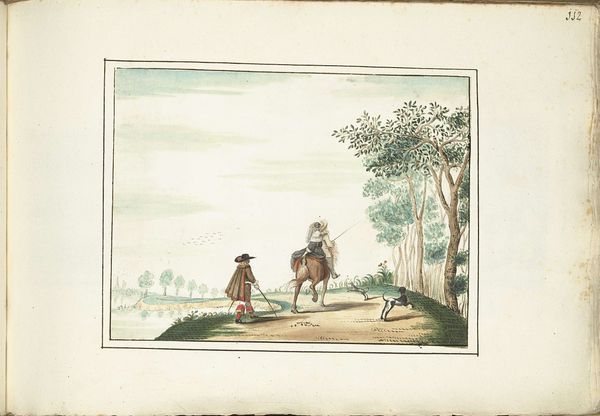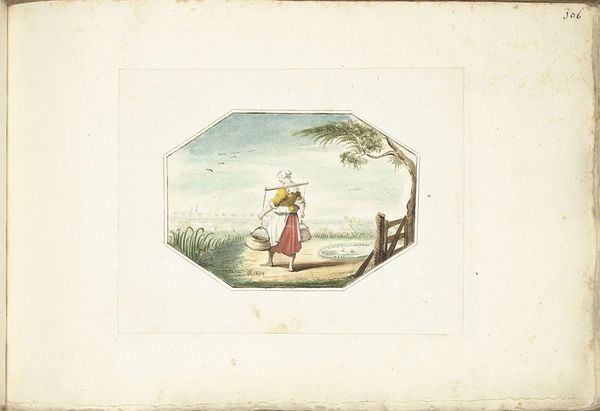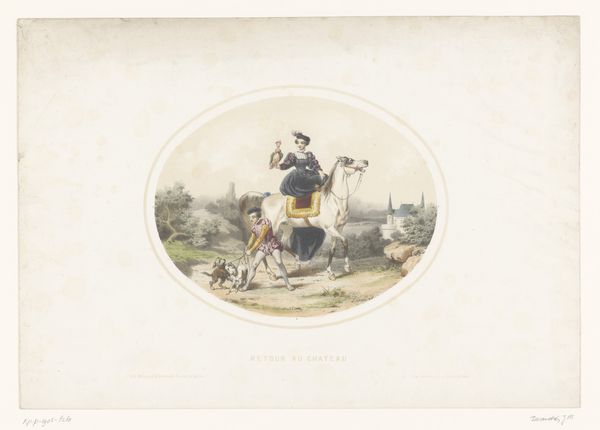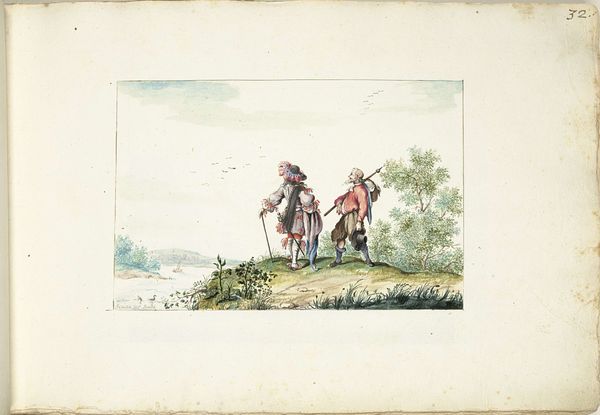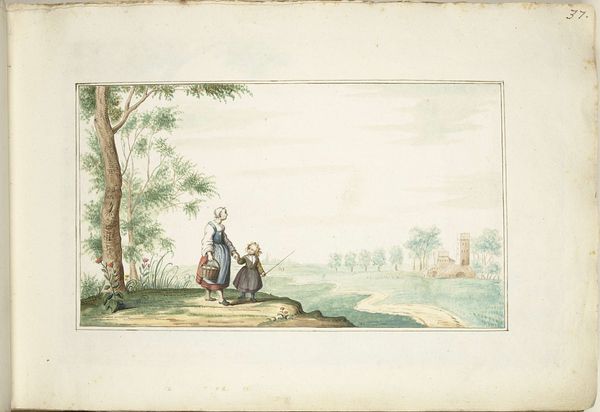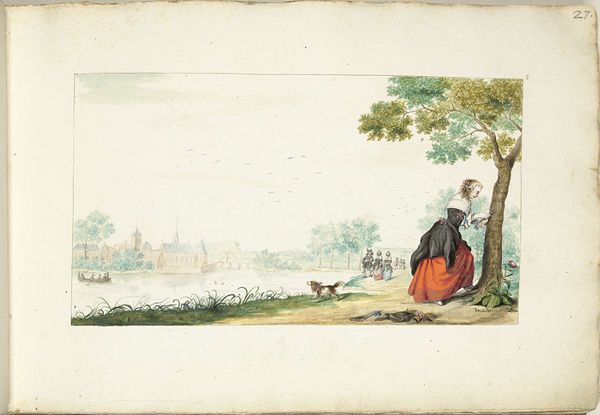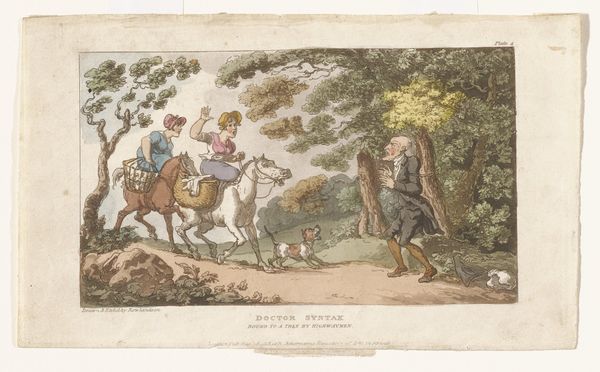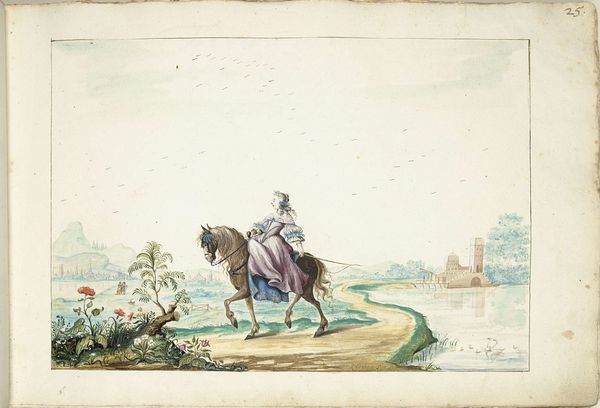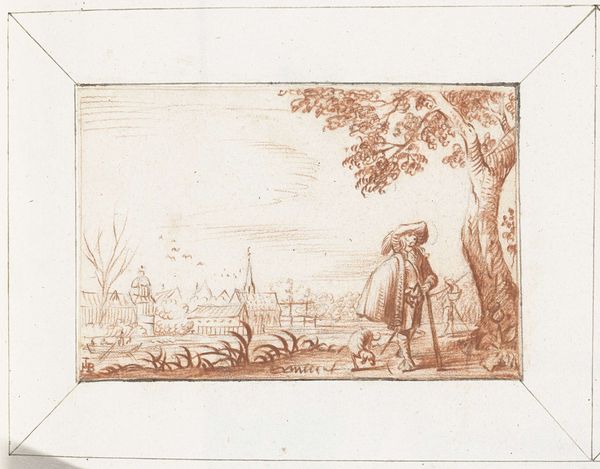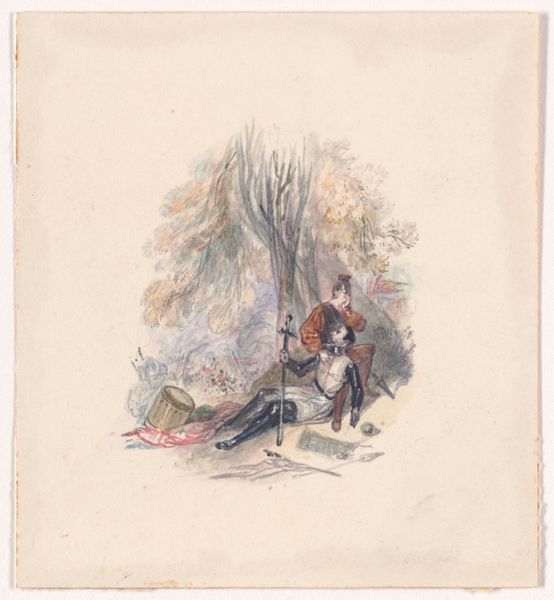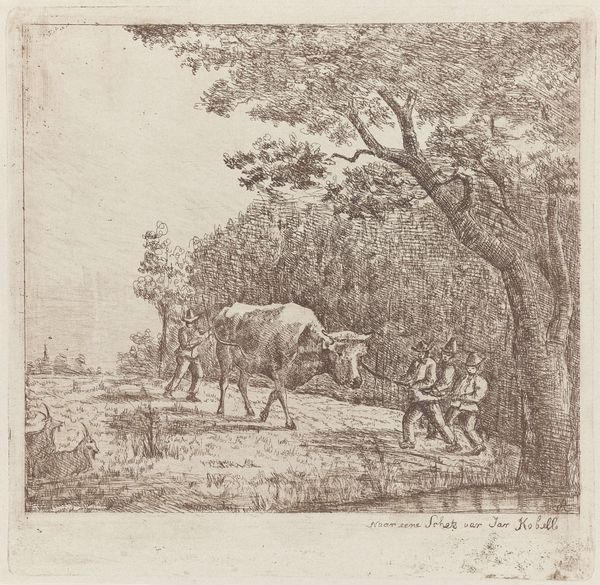
drawing, paper, watercolor
#
portrait
#
drawing
#
water colours
#
dutch-golden-age
#
landscape
#
paper
#
watercolor
#
coloured pencil
#
genre-painting
#
mixed media
#
watercolor
Dimensions: height 243 mm, width 360 mm
Copyright: Rijks Museum: Open Domain
Curator: This delicate watercolor and ink drawing, entitled "Heer lopend langs een rivier," or "Gentleman Walking Along a River," was created around 1661 by Gesina ter Borch and currently resides in the Rijksmuseum. Editor: The first thing that strikes me is the quietude of this piece. The soft hues, the leisurely stroll—there's a certain serenity that pervades it. Curator: Ter Borch’s meticulous detail is evident in the man's attire. Notice the precision with which she renders the ruffs, the ribbons, and the textures of his garments. Editor: I’m interested in situating this within a larger understanding of gender. Gesina ter Borch was a woman artist in the 17th century—what did it mean to be portraying men, leisure, and landscape during this time? How did the male gaze inform even female artistic production? Curator: You raise a crucial point. From a formal perspective, consider how she uses line to delineate form, achieving remarkable volume with such understated tones. And how she distributes colour, drawing the viewer's eye toward the man with his dog. Editor: We also can't ignore the economic context of this scene. Leisure itself is a privilege—a luxury afforded only to certain segments of society. And depicting it serves to validate that structure. Who were these landscapes made for, and what socio-economic classes were they meant to represent? Curator: Undoubtedly. We can appreciate Ter Borch’s delicate application of watercolor, particularly in how she captures the reflection of the buildings across the river surface and builds atmosphere through tonal gradation. Editor: I'm particularly moved by how it illuminates the societal divisions and hidden labour that enabled such tranquility and privilege, opening it up for discussion. Curator: It speaks volumes, indeed. Its artifice offers us an opportunity to appreciate its underlying commentary and craft. Editor: Precisely; these pieces are complex reflections on power, nature, and humanity’s place within both.
Comments
No comments
Be the first to comment and join the conversation on the ultimate creative platform.
